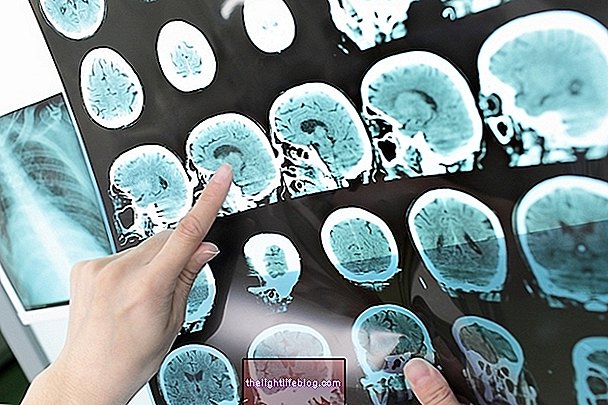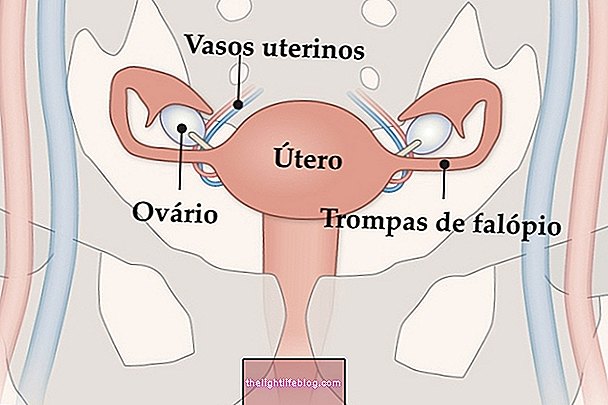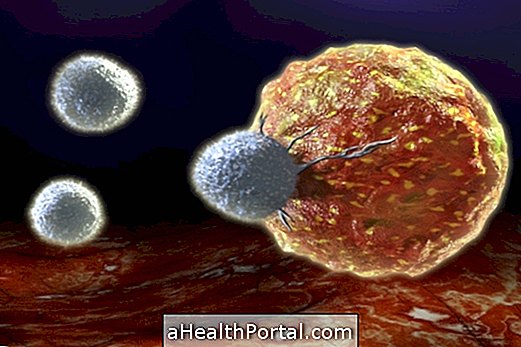Hyperemia is a change in circulation in which there is an increase in blood flow to an organ or tissue, which can happen naturally, when the body needs a greater amount of blood for it to function properly, or as a consequence of disease, becoming accumulated in the organ.
The increase in blood flow can be noticed through some signs and symptoms such as redness and increased body temperature, however when it comes to hyperemia due to the disease, it is possible that symptoms related to the underlying disease may arise.
It is important that the cause of hyperemia is identified, because when it happens naturally there is no need for treatment, but when it is related to a disease, it is important to follow the treatment recommended by the doctor so that the circulation can return to normal.

Causes of hyperemia
According to the cause, hyperemia can be classified as active or physiological and passive or pathological, and in both situations there is an increase in the diameter of the vessels in order to favor increased blood flow.
1. Active hyperemia
Active hyperemia, also known as physiological hyperemia, happens when there is an increase in blood flow to a certain organ due to the increased demand for oxygen and nutrients and, therefore, it is considered to be a natural process of the organism. Some of the main causes of active hyperemia are:
- During the practice of exercises;
- In the process of digesting food;
- In sexual arousal, in the case of men;
- At menopause;
- During the study, so that a greater amount of oxygen reaches the brain and there is a favoring of nervous processes;
- During the lactation process, in order to stimulate the mammary gland;
Thus, in these situations, it is normal for there to be an increase in blood flow to ensure the proper functioning of the organism.
2. Passive hyperemia
Passive hyperemia, also known as pathological hyperemia or congestion, happens when the blood is unable to leave the organ, accumulating in the arteries, and this usually happens as a result of some disease that results in the obstruction of the artery, influencing the blood flow. Some of the main causes of passive hyperemia are:
- Alteration in the functioning of the ventricle, which is a structure of the heart responsible for causing blood to circulate normally through the body. When there is a change in this structure, the blood is accumulated, which may result in the congestion of several organs;
- Deep venous thrombosis, in which circulation can be compromised due to the presence of a clot, being more common to happen in the lower limbs, which end up becoming more swollen. However, this clot can also be displaced to the lung, resulting in congestion in that organ;
- Portal vein thrombosis, which is the vein that is present in the liver and whose circulation may be compromised due to the presence of a clot;
- Heart failure, this is because the body demands a greater amount of oxygen and, consequently, blood, however due to changes in cardiac functioning, it is possible that blood does not circulate correctly, resulting in hyperemia.
In this type of hyperemia, signs and symptoms related to the cause are common, with chest pain, rapid and wheezing, altered heartbeat and excessive tiredness, for example. It is important that the cardiologist is consulted so that the cause of the hyperemia can be identified and the most appropriate treatment can be indicated.
How the treatment is done
The treatment for hyperemia should be guided by the cardiologist, however, as it is only a normal change or consequence of a disease, there is no specific treatment for this situation.
Thus, when hyperemia is a consequence of disease, the doctor may recommend specific treatment for underlying disease, which may involve the use of medications that help to make the blood more fluid and reduce the risk of clots.
In the case of active hyperemesis, normal blood flow is restored when the person stops exercising or when the digestion process is completed, for example, and no specific treatment is necessary.
Was this information helpful?
Yes No
Your opinion is important! Write here how we can improve our text:
Any questions? Click here to be answered.
Email in which you want to receive a reply:
Check the confirmation email we sent you.
Your name:
Reason for visit:
--- Choose your reason --- DiseaseLive betterHelp another personGain knowledge
Are you a health professional?
NoMedicalPharmaceuticalsNurseNutritionistBiomedicalPhysiotherapistBeauticianOther
Bibliography
- VARELA, MARÍLIA. Notions of pathology. Available in: . Accessed on 15 Jan 2021
- NOBLE, Vandack; ATAÍDE, Thiago B .; BRANT, Luisa C. et al. Use of peripheral arterial tonometry - reactive hyperemia and serum biomarkers for prognostic prediction in sepsis. Rev Bras Ter Intensiva. vOL 28. 4 ed; 387-396, 2016
- SCIENCE DIRECT. Hyperemia. Available in: . Accessed on 15 Jan 2021


.jpg)


















